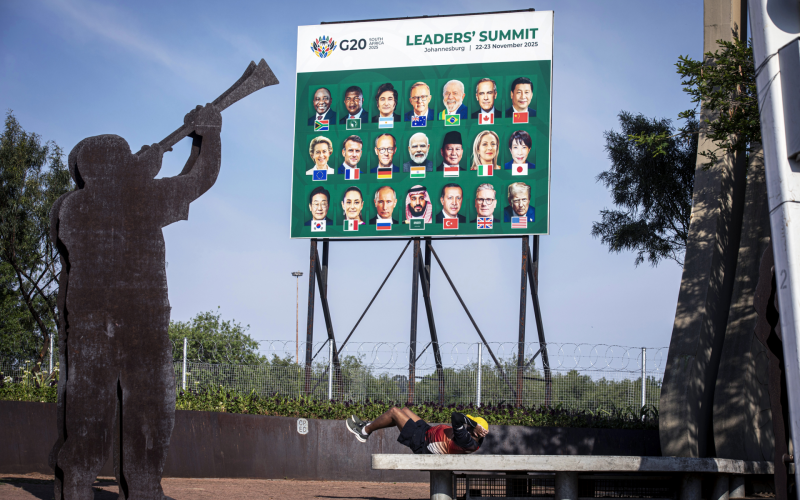The meeting will be the culmination of a series of outreach initiatives with Africa in 2019, and will also be symbolic in that a major summit recognises the growing significance for Russia of high-level ties with the African continent.
There is something to be said about summitry. The 21st century has seen a proliferation of them. From the annual summits of informal clubs such as the G7, the G20 and BRICS, and regional bodies around the world to the AU’s bi-annual summits and then the big tri-annual (or so) pageants bringing together one country (usually) and a host of others from one continent. These latter events carry great political symbolism, they provide opportunities for business deals, but they also show to the rest of the world the influence and partnerships of the initiating country vis-à-vis its guests. After all, in the case of China, its FOCAC meetings, even though they alternate between an African host and itself often have close to a full house of African leaders attend them.
Russia has had a long association with the continent, especially during the Cold War when it was part of the Soviet Union, and an ardent supporter of many national-liberation struggles. As the Soviet Union, it also considered Africa as a stage for the rivalry between itself and the US. Each side ‘needed to change the world in order to prove the universal applicability of their ideologies, and the elites of the newly independent states proved fertile ground for their competition’.[1] However, the end of the USSR saw Russia, its successor state and riven with problems at home, turn away from its erstwhile allies in the Africa in the 1990s and focus primarily on Europe and the West. This began changing slowly in the early years of the 21st century, but the significant break with the West came after Russia violated international law and annexed a part of Ukraine, Crimea, in 2014 and backed rebels in Ukraine’s east, through sending of military personnel (albeit without insignia) and arms to fuel the conflict. Economic sanctions from the EU and the US followed soon after.[2]
By most indicators Russia has a much smaller footprint in Africa in terms of scale than most of the other major external actors on the continent. It has lacked the instruments and the resources of countries such as China, Japan, the EU and the US. The holding of the first summit is Russia’s attempt to highlight to Africa the continent’s political importance, and to provide a framework for its cooperation. The summit has been in the works for some time, and the initiative cannot be divorced from Russia’s own diplomatic, commercial, and military attempts to assert its global role in the face of ongoing sanctions by the West and attempts to sideline it.
Three imperatives bear mentioning: Russia’s desire to create a favourable environment externally for its economy to grow and to be more competitive; to consolidate Russia as a centre of global influence, which requires it to be present in all geographies and to be taken seriously; and to build up its economic relations so as to break out of the Western economic stranglehold of sanctions.[3]
This paper analyses Russia’s re-engagement with the continent in the context of the evolution of Russian foreign policy since the end of the Cold War, arguing that its turn to Africa is part of a multi-vector approach that was articulated as early as 20 years ago. Russia has been a vocal advocate of a multipolar international system, as opposed to one dominated by the US. Its foreign policy pursuits have been characterised by the objective of establishing diverse partnerships aimed at bolstering its position vis-à-vis the West (BRICS, Shanghai Cooperation Organisation, Eurasian Economic Union); however, this approach received greater impetus after the imposition of Western sanctions in response to its annexation of Crimea. Thus greater attention to Africa (and specifically sub-Saharan Africa, as Russia has maintained strong ties with North Africa through most of the post-Cold War period), has been driven by both geopolitics and economics.
The paper begins with a brief overview of the drivers of recent Russian foreign policy, followed by a focus on the evolution of its Africa engagement and an analysis of the different sectors that have formed the basis of this re-engagement. The paper includes a brief overview of relations with South Africa, probably the most significant country in Russia’s Africa engagement in sub-Saharan Africa, not so much because of commercial relations but because of South Africa’s important regional and global role and its presence in many international forums. The last section focuses on what Africa could expect from Russia and how the continent as a whole should engage with Russia in the future.
Footnotes
[1] Westad OA (2007). The Global Cold War. Cambridge: Cambridge University Press, p. 4.
[2] In many ways Russia’s reengagement with Africa was similar to the PRC, which was very Western focused from 1980 onwards until the shock of the Western response to Tiananmen Square in 1989. It was on that basis that in the late 1990s China rediscovered Africa as a diplomatic bulwark which was not interested about imposing sanctions.
[3] Gvosdev NK and C Marsh (2014). Russian Foreign Policy: Interests, Vectors and Sectors. Thousand Oaks, California: CQPress.








